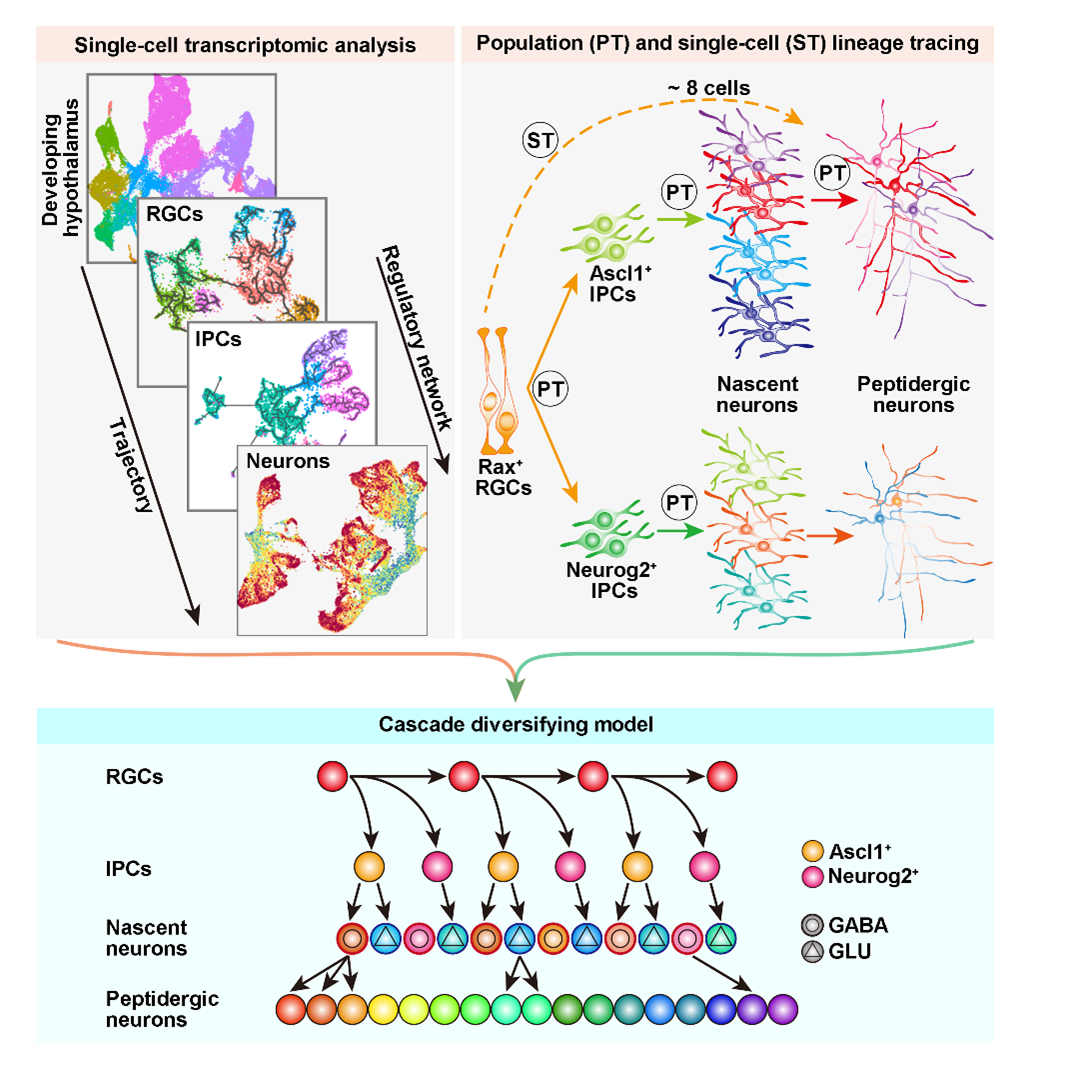12 20, 2021
A New Principle for Generating Neuronal Diversity

Hypothalamus maintains systemic homeostasis of animals and human beings by regulating endocrine, autonomous and behavioral functions. Heterogeneous populations of hypothalamic neurons orchestrate this functional versatility via the release of specific neurotransmitters and neuropeptides. Despite that recent studies have revealed the complex molecular diversity of hypothalamic peptidergic neurons, the developmental diversification and trajectory of these hypothalamic neurons remain unclear.
Using a combination of single-cell RNAseq and lineage tracing, Dr. Qing-Feng Wu’s research group at the Institute of Genetics and Developmental Biology, Chinese Academy of Sciences, recently uncovered a cascade diversifying model for hypothalamus development wherein radial glial cells (RGCs), intermediate (IPCs) and nascent neurons prompt the diversification of neuronal fate in a stepwise manner. This work was published in Cell Stem Cell online on April 21th, 2021.
In this study, researchers firstly profiled the transcriptome of 43,261 cells derived from hypothalamic neuroepithelium to delineate the developmental trajectory of RGCs, IPCs, nascent neurons and peptidergic neurons within the neural lineage hierarchy. Results indicate that RGCs give rise to two differential IPC sublineages: Ascl+ and Neurog2+ IPCs. Populational lineage tracing further confirmed Ascl1+ and Neurog2+ IPCs coexist in the developing hypothalamus and displaying distinct spatial distribution and lineage differentiation. Interestingly, Ascl1+ IPCs differ from their telencephalic counterpart by displaying fate bifurcation whereby they can differentiate into both glutamatergic and GABAergic neurons. Moreover, postmitotic nascent neurons arising from IPCs resolve into multiple peptidergic neuronal subtypes during development, which further expand the complex molecular diversity of hypothalamus. Indeed, single-cell linage tracing of hypothalamic progenitors also demonstrates that single RGCs can produce multiple peptidergic neuronal subtypes.
Together, this study reveals that multiple cell types along the lineage hierarchy contribute to fate diversification of hypothalamic neurons in a stepwise fashion, suggesting a cascade diversifying model that deconstructs the origin of neuronal diversity.

Cascade diversifying model underlying hypothalamus development